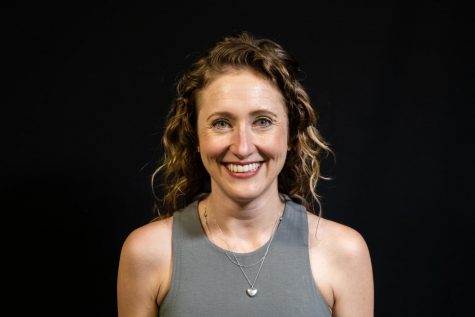Santa Rosa Junior College’s College to Career (C2C) program leads California in helping intellectually disabled or autistic students attend college and find jobs afterward, according to the agency that oversees C2C programs statewide.
The California Department of Rehabilitation (DOR) announced last month SRJC’s C2C program outranked the state’s seven others at San Diego, Orange County, Los Angeles, Fresno, Sacramento, Alameda and Shasta community colleges for securing long-term employment for students.
The first-place ranking relied on data from the 2017-18 academic year when the program employed 19 students in the career of their choice after completing all C2C academic requirements. An additional 11 found jobs but are still working with the program.
C2C Interim Coordinator Lindsay Lerro said it’s no surprise SRJC’s program rose to the top above the seven others.
“It’s the nature of our college,” Lerro said. “We have a department that understands the nature of the disability and what it takes to support that. Everyone is so focused on the good of the student.”
Success Coach Mary Schexnaydre agreed.
“I have seen magical things happen in this program,” Schexnaydre said. “Through their hard work and our belief in them, our students discover their place in the world.”
C2C admits roughly 20 students annually to its three-year, highly structured curriculum helping autistic or low IQ students identify attainable career goals. The program then ensures students complete the appropriate on-campus coursework and off-campus internships to land the long-term job they choose.
Lerro laid out an example trajectory.
A student might arrive at the program wanting to be a video game designer but is prohibited by the high-level math courses required. Instead, C2C staff channels that student’s passion into a certificate for computer tech support and tailors her course load and work experience accordingly.
“We start them with an internship at the computer recycling center,” Lerro said, “and then as a result of that we’re able to get them employed somewhere that uses computers.”
Third-year C2C student Chris Allen, 32, is taking four classes this semester: business English, a Microsoft Excel skills course, a C2C-specific class and his favorite, a hip hop-funk dance class that meetings twice weekly in the evenings at Tauzer Gymnasium. Allen also works part-time as a host at Mary’s Pizza Shack while he investigates his next step.
He said his life has been vastly improved by the program.
“Things have really changed. Big Time. Hugely,” Allen said. “I’m able to do more instead of just staying home and just being a couch potato.”
Nick Walton graduated from the program two years ago and has been employed as a Starbucks barista ever since. But Walton has additional goals. He is back at SRJC working towards a Health and Nutrition Certificate with the goal of becoming a fitness trainer.
Other recent C2C job placements include deli counter clerk at Safeway, residential care worker for Brookdale and front desk and administrative positions in office environments.
Required coursework for all C2C students includes Disability Resources Department classes on effective communication skills and Career and Technical Education classes on time or records management, for example. Students are also required to engage in the campus community by attending weekly activities including sporting events and plays.
“In the three years that students are with us, I watch them transform from timid novices to confident professionals who have a strong sense of self,” Schexnaydre said.
Northern California residents have taken notice of SRJC’s C2C program and its students’ outcomes. The program is highly-regarded; students relocate from Berkeley, Marin and as far away as Mendocino to attend. Walton’s family came from the South Bay so he could participate in C2C.
“We had another family who moved here from the Walnut Creek area — it was a quality of life choice for their child,” Lerro said. “Knowing [the student] was in a place where it was safe to ride the bus and that bus rides were simple” allowed the parent to retain their own quality of life, too.
Hometown is not the only disparity among C2C participants. Each year’s class represents a diverse bunch of students at different stages of their lives.
“We get some students straight out of high school, then we get a lot in their early 20s who have done a transition program through the Sonoma County Office of Education, and then we have some in their 30s and even early 40s who’ve done the program,” Lerro said. “Some people have done a day program and realize they want more with their life, and it didn’t click for them until they were 33.”
Regardless of students’ age, background or disability, the program makes a tangible difference in their lives.
“C2C allows students to do something that many were often told they would never do: go to college and get a job,” Lerro said. “We’re pretty proud of ourselves.”





Olivia • Oct 26, 2018 at 5:16 am
Hello Admin,
It is very nice that your blog is providing information regarding the program. I want to aware you towards the “Sustainable Internships for Students”. These internships are a unique opportunity for undergraduate/postgraduate other level students.
Application Deadline is Varies.
For more information you can go through –
https://www.biginternships.com/sustainable-internships-for-students/